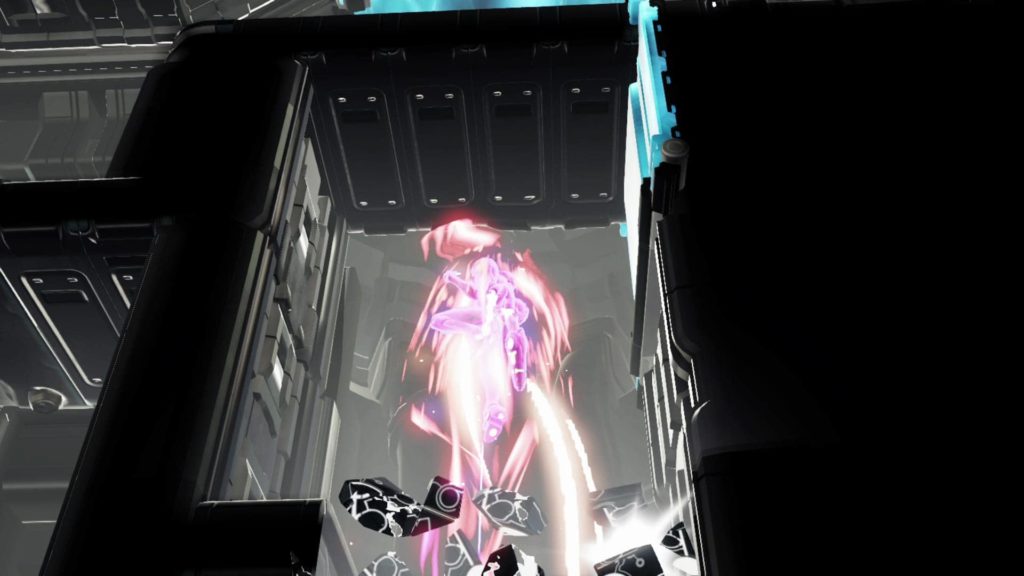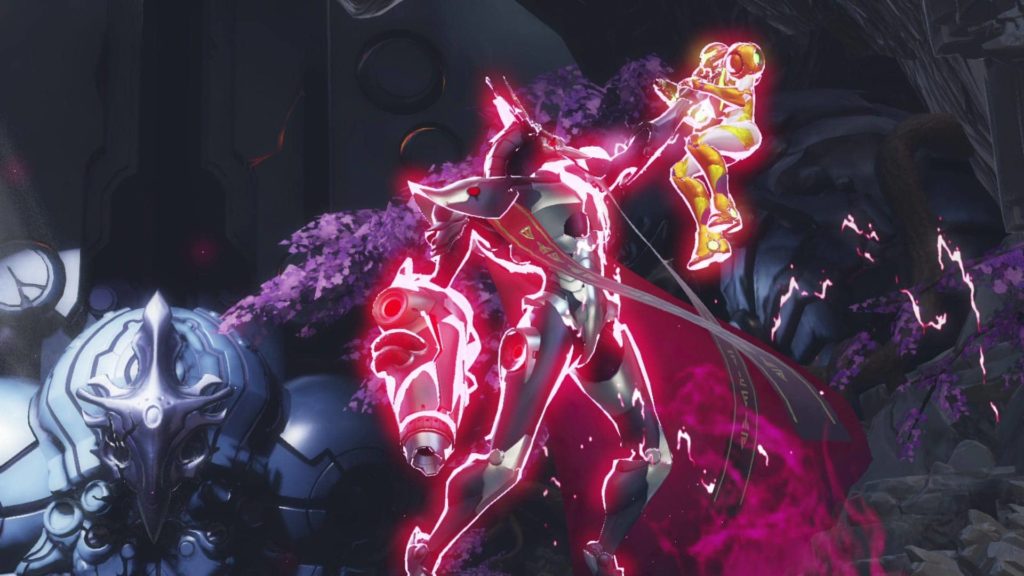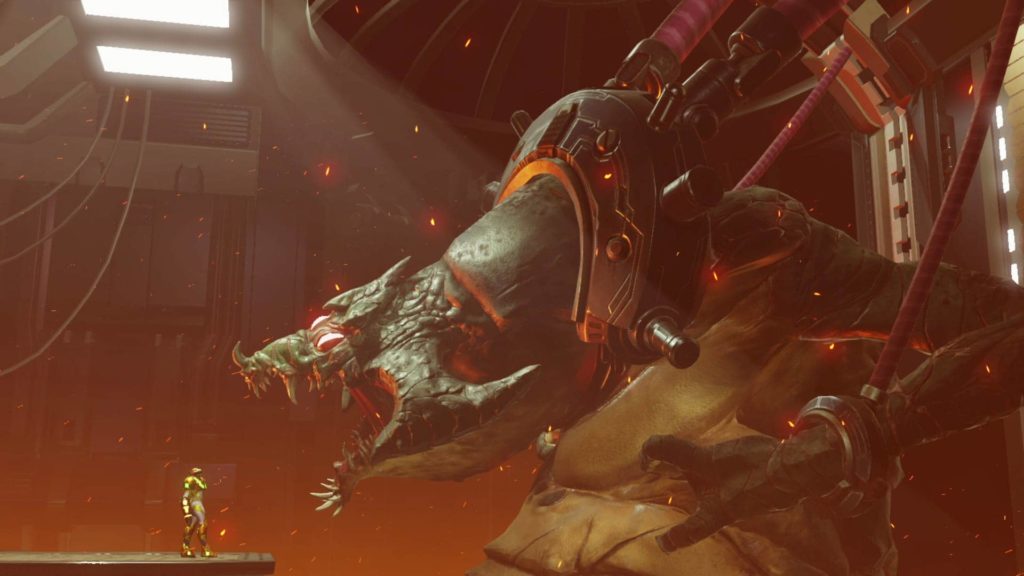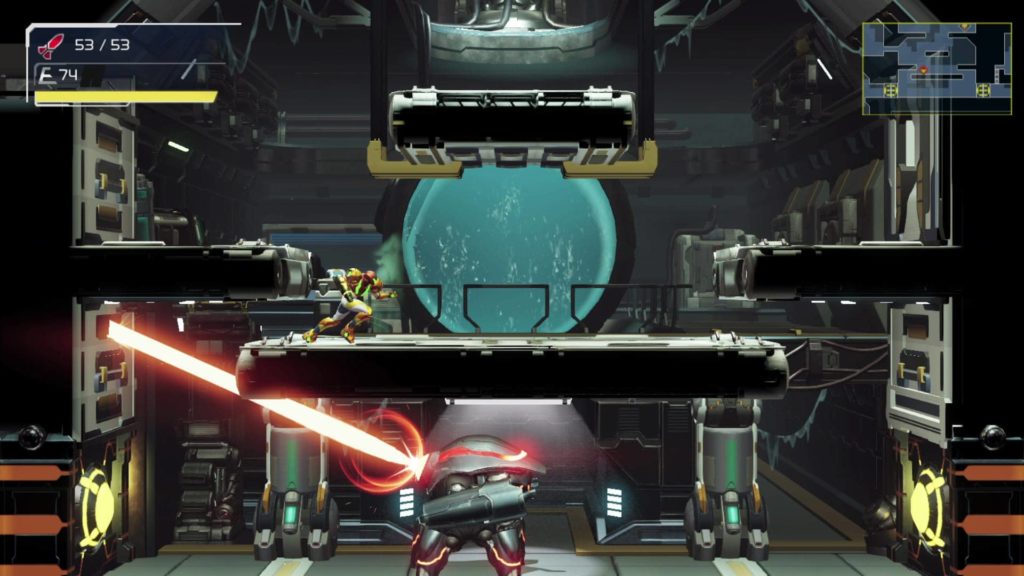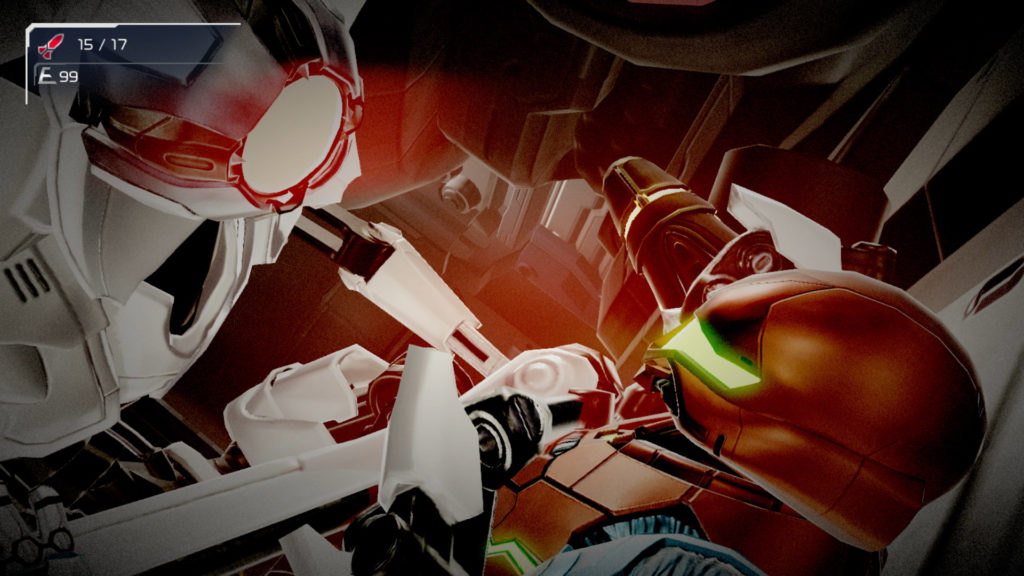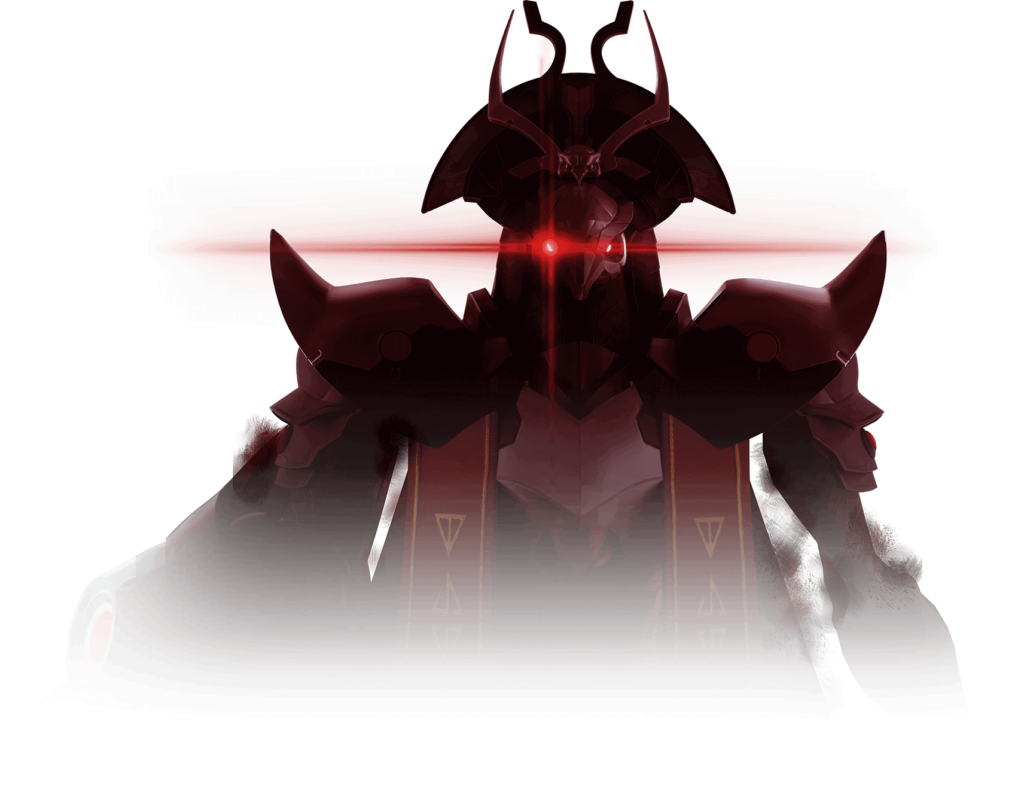By Ryan | 10/16/2021
WARNING: THIS REVIEW HAS 1 SPOILER COVERED WITH WHITE HIGHLIGHT THAT YOU MUST UNCOVER TO READ.
I bet you’re dying to know what I think of Metroid Dread. I think the game is rather good and I definitely enjoyed my time with it! I will continue to enjoy it for years to come. Was it worth 19 years of waiting to see what happens after Fusion? Read on and find out!
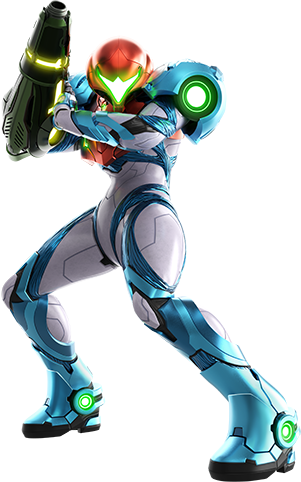 Interactivity
Interactivity
-Pros-
For some of us, the very second you control Samus, you may realize: holy crap, it’s 2021 and I’m playing as Samus in a 2D game on my TV! It was an intoxicating experience. I’ll admit when Dread was first announced, the initial shock didn’t wear off for months. Using the control stick left or right to run, jumping and shooting is delightful and incredibly responsive. It was a simple pleasure that stayed with me from beginning to end. Her slide is also an incredibly welcome addition, some may wonder why this wasn’t added years ago as it’s been a staple in the Megaman series since III, but now that it’s in, it’ll be hard to go back to replay the old games because you’ll wish the ability was in there. And once you start sliding into Morph Ball with a double tap of L2, I guarantee you’ll be doing it all the time. It’s this kind of flawless play control that pushes Dread a step above all the other Metroidvanias out there.
The game brings back nearly every staple powerup of the series as well as a few new ones (Flash Shift must be in every 2D Metroid from now on!), so fans will feel right at home as you collect items which allow you to explore more of the game. The game is also designed so intricately that gamers are already doing 0% runs. It’s also worth noting that there is no cap on the rate in which Samus can shoot her beam (no cap). So if you’re one of those talented individuals that can move your thumb as fast as a hummingbird can flap its wings, then you can use that to your advantage if you don’t like relying on Missiles.
Aiming with L and opening your missile hatch with R while shooting with Y also works very smoothly. Aiming will freeze Samus in her tracks, allowing you to use a laser-sight to know exactly where you plan on shooting. It works just as well as it does in Samus Returns, but the game lets you also use it while attached to Spider Magnet walls. Using this technique when combined with the Grapple Beam lets you pull yourself across long distances from one Spider Magnet wall to the next, which I found to be highly satisfying. Samus can also use Seeker Storm Missiles. Holding down R while aiming will automatically lock cursors on the targets, then press Y to shoot. It doesn’t matter which way you’re facing, the missiles will automatically seek out their targets. It’s very intuitive and fun. For maximum enjoyment, use them as often as you can.
A returning ability from MercurySteam’s previous game Samus Returns is the Melee Counter; Samus will use her arm cannon to whack things that want to come in close. Fortunately the necessity of using it has been dialed back heavily in comparison to the 3DS title. Sure, nearly every enemy has its own melee spark timing, but it’s not forced upon you as often as it was in SR.
Overall, controlling Samus has never been as quick, responsive, or satisfying. Don’t let me forget to mention all incredibly satisfying Shinesparking puzzles…
-Cons-
Though it may sound like a nitpick, the biggest beef I have with the game’s control is using the Grapple Beam. Though it’s nowhere near as egregious as Super’s, the Grapple Beam is not quite easy to use, with the only exception being what I mentioned earlier – its utility for latching onto Spider Magnet tracks. Most times you have to push four (4!) things to make it work, Hold L1+R2, then push Y to shoot it. And if you’re trying to open a Grapple Beam door or destroy a Grapple Beam block, then you have to pull the stick in the opposite direction after shooting. This was a sticking point with me and I found myself continuously messing up the button combinations. Maybe I won’t have that issue in future playthroughs, but it would have made more sense to either allow players to remap the buttons, or make the Grapple Beam an on/off switch and not a toggle. Perhaps like AM2R, they could have given us the option?
If it were me, I would have made the following changes in the control scheme:
- Press and hold A+Control Stick direction for 1 second to run/initiate Speed Booster
- Press L3 to switch between normal Beam and Grapple Beam
- Press R2+Control Stick direction to Flash Shift
A few other buttons on the controller weren’t even being used, so there’s definitely some wiggle room there that could’ve been fixed with adding a way to remap the controls. Super Metroid had it, why not Dread? There’s also a few relatively useless things like pressing Up on the Dpad which enlarges your minimap. At first this may seem useful, but in reality, it’s not. When I want to look at the map, I will push the Menu/Map button (+) because I can zoom in or out, switch areas, move it around, highlight icons, etc. Something like making the minimap larger while on the gameplay screen seemed unnecessary and I had no incentive to use it. Maybe some of you who are reading this article didn’t even know that function existed.
Other than these minor things, I don’t have many more cons in regards to Dread’s gameplay. It’s by far the best Samus has ever controlled, and one of the most enjoyable things about the game.
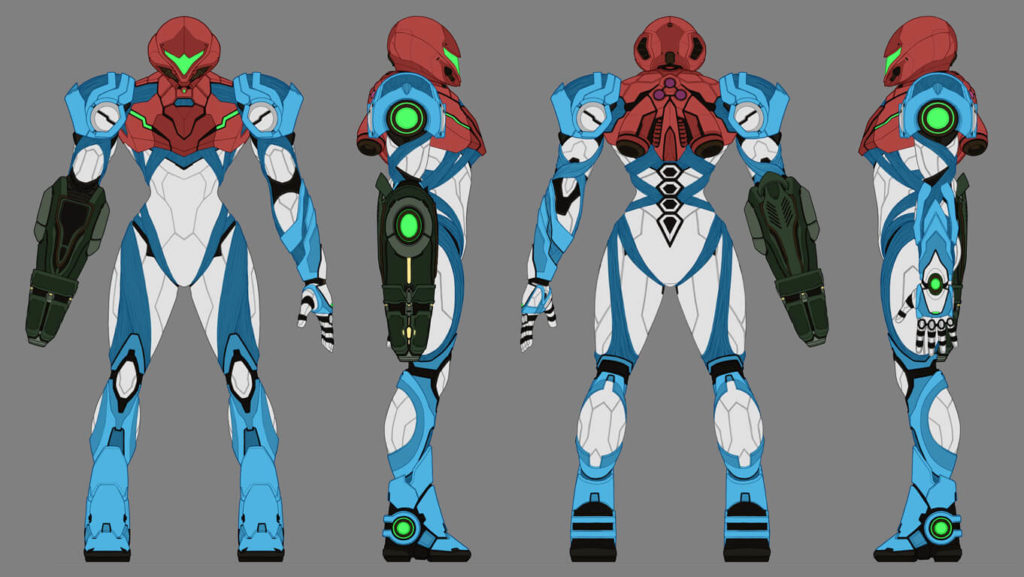 Aesthetics
Aesthetics
-Pros-
The game is gorgeous for Switch standards, running at 60fps for nearly 99.9% of the entire time. One tenth of the game you may notice a very brief stutter, but name a AAA game in which a very brief stutter doesn’t occur. In comparison to the Switch’s library, I struggle to think of another game on the console in this genre that looks as good as this game. Perhaps Bloodstained comes close. I did notice that while the individual areas are very theme-based in typical Metroid fashion, the palettes they used in the areas are relatively muted and dark, making it seem like you’re on a world that doesn’t want you there, instead of the usual “LET’S GO EXPLORING!” feeling you get from other Metroids. There are a few setpieces within the game’s backgrounds that are extremely stunning to look at, but they’re few and far between. I was extremely impressed with the Save Rooms, too. Just gorgeous.
Samus looks stunning with her normal maps and her high poly model. The realtime cutscenes are also animated beautifully and all of Samus’s animations flow incredibly smoothly from one action to the next. There is nothing in this game, animation-wise, that takes you out of the experience. I gotta hand it to the team at MercurySteam, they really made Samus shine in all aspects.
The game also has a fair amount of particle effects and nice explosions and blasting effects which may all be in 2D textures, but it’s hard to tell. Any way you slice it, they did an incredible job with the game’s visuals and I couldn’t be happier.
-Cons-
Seeing as the game is literally called Dread, it never wants you to feel like you’re in a comfortable place at any given time. As such, the majority of the game takes place within repetitive techno-factory corridors, and large intricate buildings with Chozo architecture. That may sound a little familiar to long-time fans, but the game does not have a lot of strictly open, organic areas. The organic areas that do exist are also laden with the inner rooms and hallways and feel eerily inorganic. You could say this is typical of Metroid, but after 14 years, Prime Trilogy set a bar which I don’t feel Dread reaches in regards to atmosphere, and they accomplished that on incredibly low-powered hardware. (Nintendo/MercurySteam: Next time, please attempt to embrace MPT’s aesthetics as a quality standard. As far as the series goes, they are unmatched.)
The game’s score is another disappointment I have with Dread. In the past 35 years, Metroid fans have come to expect a certain “panache” in the series’ soundtracks. Examples would include: Zero Mission’s entire OST, Super Metroid’s entire OST, Metroid Prime Trilogy’s entire OST. On the other hand, the scores of Fusion, Other M, or Samus Returns are more ominous, threatening, lurking, atmospheric, and tension-inducing. Dread’s OST is much more the latter than the former. So much so, that it slightly detracts from the experience. For fans of Metroid, the game contains three classic tracks – the Opening Theme, Theme of Samus, and Red Brinstar (the classic jingles are there too). Everything else is new. I’m not asking for a majority of musical fanservice (ala AM2R), but I’m a little disappointed that I won’t be actively listening to Dread’s OST while I’m doing other kinds of work. I’m not expecting catchy tunes, but when you listen to something like Kraid’s theme (Zero Mission or the original will suffice), Super’s Brinstar or Lower Norfair, MPT’s Phendrana Drifts or even something very amelodic like Sanctuary Fortress or Skytown, and then listen to something in Burenia, Ferenia, Cataris or Dairon you can’t help to think, “what happened?” The bar has been set. Either make an attempt to reach the bar or surpass it, but don’t underachieve.
Content
-Pros-
In true Metroid fashion, you are stuck on an alien world with nothing but your armor, your weapons, and your intuition, with no one around to help you. Isolation is a key theme of the series and this game has definitely nailed that aspect.
The game’s 9 areas gives the feeling of a large map, however it’s nowhere close to something like Hollow Knight’s (which has an extremely different design approach than Dread), but overall it shouldn’t take anyone more than 8-12 hours of playtime (My first any% was 7:30-ish, and 100% in 11.) That being said, it did feel like an incredibly cohesive, streamlined experience.
The game offers an incredible amount of replay value. There are many shortcuts and ways to Speed Boost or sequence break your way through it, giving the player an intense feeling of freedom akin to that we had in Super, but also combined with the linearity we found in Fusion, minus Adam barking orders at us. In fact, this game offers the easiest IBJ (infinite bomb jump) that’s ever been offered in a Metroid game. I would say the game is a melding of Super and Fusion in terms of its game design and it’s the absolute pinnacle of the Metroid experience. I do not say that lightly. If and when Metroid 6 arrives, it will be difficult for them to top this game. Lastly I will mention that there are some Shinespark puzzles in this game that will leave you breathless after pulling them off. It is definitely worth the time spent.
-Cons-
It may shock you to hear that I believe the areas, while modeled nicely and look good, stepping back and looking at the big picture, end up being flat out bland. I feel there was an apprehension towards making the world feel more alien-like or otherworldly (Once again, MPT pulled this off flawlessly) and the game seems to have a difficult time making players believe it’s maybe, slightly not Earth. Allow me to list the (lack of) diversity of the game’s environments:
- Artaria is caves with technology / factory rooms
- Burenia is the water area / water caves (with technology rooms)
- Cataris is a lava area with the power plant / factory rooms
- Dairon is a technology / machine factory
- Elun is the keep where the X are being stored
- Ferenia is the Chozo “city” (read: a few rooms with incredibly well-kept Chozo architecture)
- Ghavoran is the outdoors / underground forest (with more technology rooms)
- Hanubia is the bioweapons research lab / technology / factory
- Itorash is the Chozo flying ship/castle in the sky that isn’t more than 3-4 rooms long
- The E.M.M.I. rooms are 50% of the game, are technology / factory based, and offer no differences in overall look and feel within each area
See any patterns? I noticed it, but maybe it’s because I have extremely high standards when it comes to Metroid games. If Samus was blasting through a random space station, I’d totally understand. But she’s on an entirely new planet. Is it asking too much to mix it up a bit?
The game also offers a decent amount of new enemy creatures and bosses, but falls just short of them being creative or interesting. It’s one thing to be inspired by the enemies of the past, but this game rarely goes beyond those concepts. Sure, there’s the triumphant return of Kraid, but the game’s other bosses and minibosses were not that interesting, especially the boss of Burenia. Once you get some certain weaponry, you can make short work out of just about everything with ease. (Don’t get me started on the final boss. You’ve been warned.)
E.M.M.I. Search-and-Destroy
Let’s discuss the E.M.M.I. and the concepts behind them. Starting from the very first preview at E3 of this year, we were introduced to this robot menace that “intelligently” tracks Samus. Some may have concluded that this game would be very heavily focused on E.M.M.I. avoidance, similar to the SA-X but on a much more grander scale. In Dread, that isn’t the case at all. At first it may seem that way and the E.M.M.I. are very scary because you’re relatively weak. Later on though, once you end up having more control over your abilities, they end up being nothing more than an obstacle that you can carelessly overcome and dodge, and can destroy quite easily once you acquire your oh-so-temporary Nova Beam. While the E.M.M.I. are a really interesting concept, they never really did much to intimidate me. Every time I got caught by an E.M.M.I. I simply started over at the checkpoint and was able to overcome it in no more than 3-5 retries. I was also able to counter them in a reasonably consistent manner, despite the game (Adam) telling you outright that you won’t be able to so very easily. In hindsight, I think E.M.M.I.s were a way to keep the player on their toes, but the level design associated with the E.M.M.I. rooms severely block the game from reaching their true potential.
Just spitballing: if the E.M.M.I. rooms had been procedurally generated, would that have led to a more exciting and impossible-to-predict experience? Maybe each of the E.M.M.I. rooms could have had more interactive puzzles in them that reset every time you enter and leave, which would have led to more forced encounters with these relentless, deadly robots. Instead, we are given these preset paths with very predictable, preset ways of avoiding them, (not to mention the existence of the Phantom Cloak which makes you invisible from their scanners) and I didn’t find the E.M.M.I.’s presence in the game to be anywhere near as memorable as dodging Fusion’s SA-X with its heartbeat sfx and that “OMG, it’s right there” feeling every time I saw it. It saddens me to say that “dread” is not an emotion I conceived while playing this game. Removal of the Phantom Cloak completely may have also prevented this. I didn’t hardly ever use it anyway; I don’t think its existence was necessary.
Conclusion
Most of what I said above is admittedly sour grapes, but there is some truth in there, and there’s definitely some room for improvement. Metroid established a genre that has infinite possibilities, and we are always going to be here for it. Every single aspect of this game is brimming with polish and passion, but it’s definitely not perfect. The game is incredibly challenging at times, has some questionable design choices, does little to improve the existing Metroid formula, can be a little graphically and aurally underwhelming at times, and for the most part, the enemies and background areas are somewhat subdued, uninteresting, and repetitive. I hope MercurySteam and Nintendo learn to step out of their comfort zone when designing the next one.
On the upside, without a shadow of a doubt, this game is MercurySteam’s crowning achievement and should be celebrated by both old fans and new ones. Judging from the existing reception, most of the gaming and Metroid community is thrilled as they could be at this game. It is an incredible, worthwhile experience from beginning to end, and one that all fans of Metroid and the genre should play. That being said, I don’t believe Dread is GOTY material or deserving as such. While it may not knock your socks off, it’s absolutely a worthy addition to the saga and I am beyond grateful that the Metroid 5 we received is the Metroid 5 we all deserved.
Please don’t take another 19 years to make Metroid 6, okay, Nintendo?
I give Metroid Dread an A-.

